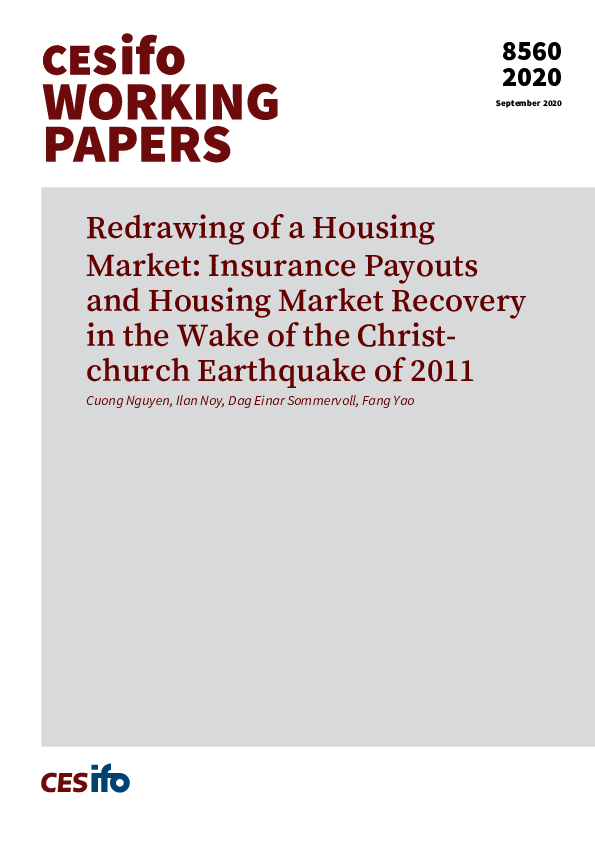Redrawing of a Housing Market: Insurance Payouts and Housing Market Recovery in the Wake of the Christchurch Earthquake of 2011
CESifo, Munich, 2020
CESifo Working Paper No. 8560

On the 22nd of February 2011, much of the residential housing stock in the city of Christchurch, New Zealand, was damaged by an unusually destructive earthquake. Almost all of the houses were insured. We ask whether insurance was able to mitigate the damage adequately, or whether the damage from the earthquake, and the associated insurance payments, led to a spatial re-ordering of the housing market in the city. We find a negative correlation between insurance pay-outs and house prices at the local level. We also uncover evidence that suggests that the mechanism behind this result is that in some cases houses were not fixed (i.e., owners having pocketed the payments) - indeed, insurance claims that were actively repaired (rather than paid directly) did not lead to any relative deterioration in prices. We use a genetic machine-learning algorithm which aims to improve on a standard hedonic model, and identify the dynamics of the housing market in the city, and three data sets: All housing market transactions, all earthquake insurance claims submitted to the public insurer, and all of the local authority’s building-consents data. Our results are important not only because the utility of catastrophe insurance is often questioned, but also because understanding what happens to property markets after disasters should be part of the overall assessment of the impact of the disaster itself. Without a quantification of these impacts, it is difficult to design policies that will optimally try to prevent or ameliorate disaster impacts.
Public Finance
Resources and Environment